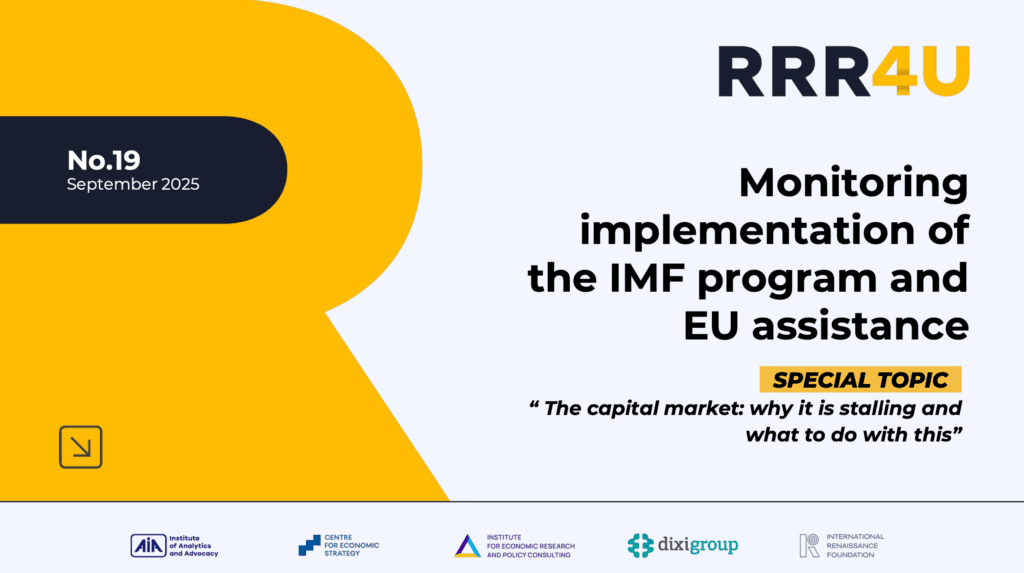
The government presented its vision of reforms for the next year and a half in the form of the CMU Activity Program, and a Priority Action Plan for 2025 was also developed. This is a fairly systematic attempt: operational goals, implementation steps, and performance indicators were defined. At the same time, the document did not undergo proper discussion (5 working days for proposals) and was submitted after the deadline. The political assessment should be given by the Parliament.
Discussions are ongoing on the terms of the new cooperation program with the IMF, but key parameters have not yet been determined. It is expected that unfulfilled obligations will be transferred to the new program, and the IMF itself may be more demanding. Meanwhile, by the end of September, 6 out of 9 structural benchmarks have been fulfilled until the next, 9th review.
The update of Ukraine’s Plan for the Ukraine Facility did not save from delays in reforms. The European Commission approved the changes, although they still need to be formally approved by the Council of EU. Therefore, in this presentation we move on to the new “calendar” of the Plan. Some of the reforms that were decided to be done faster have stalled: in particular, draft law No. 12087-d (electricity integration package) was not adopted in Q3 2025. Reporting on the implementation of indicators is significantly delayed (no report was submitted for the second quarter), which delays subsequent – even partial – payments. Restructuring due to the merger of a number of ministries is also not adding dynamics.
Ukraine is still looking for resources to cover the deficit. The government estimated the unmet need for international financing in 2025-2026 at $37.4 billion. The State Budget-2026 draft envisages an increase in external borrowing by +21.7% (to UAH 2.12 trillion), which should finance 42.3% of all expenditures.
IMF
We expect the ninth review of the IMF program to take place approximately in November – December. The Fund will assess the implementation of quantitative performance criteria and structural benchmarks as of the end of September 2025. In total, Ukraine must implement 9 structural benchmarks by the end of September. On September 9, Ukraine officially applied to the IMF with a request for a new cooperation program for the coming years.
Ukraine is counting on a positive decision by the IMF Board of Directors by the end of the year. There are no official details yet, but according to media reports, the amount of financing under the new program may reach only $8 billion, which is very small. Some of the unfulfilled structural benchmarks from the current program may be included in the new program with the IMF.
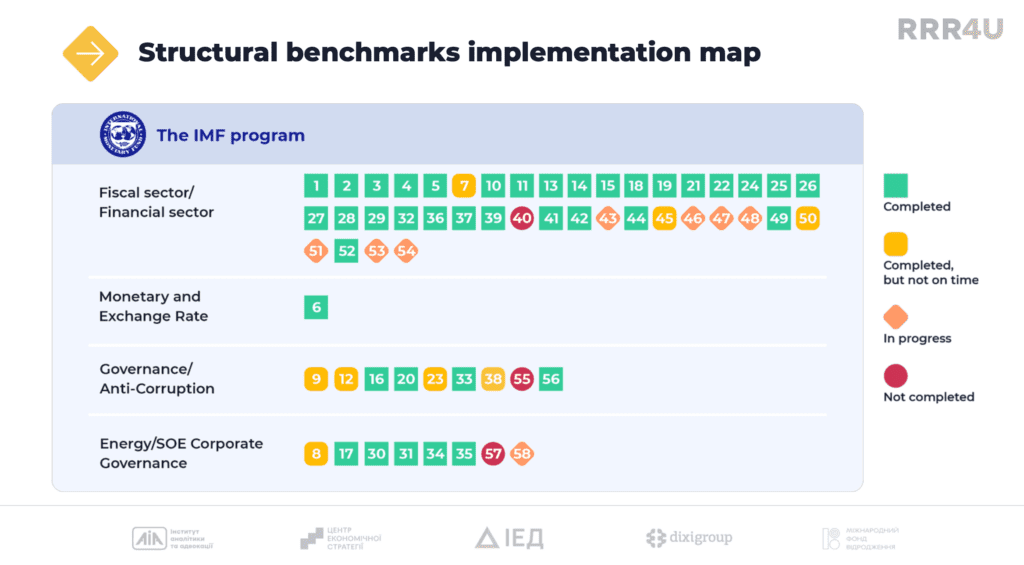
EU
The implementation of the Ukraine Plan is ongoing under the Ukraine Facility.
The European Commission has approved the changes to the Ukraine Plan. The final decision is up to the Council of the European Union.
The Ministry of Finance pointed out the risks to state budget financing associated with the delay in reforms under the Ukraine Plan.
The Cabinet of Ministers has determined the criteria for public procurement using Ukraine Facility funds.
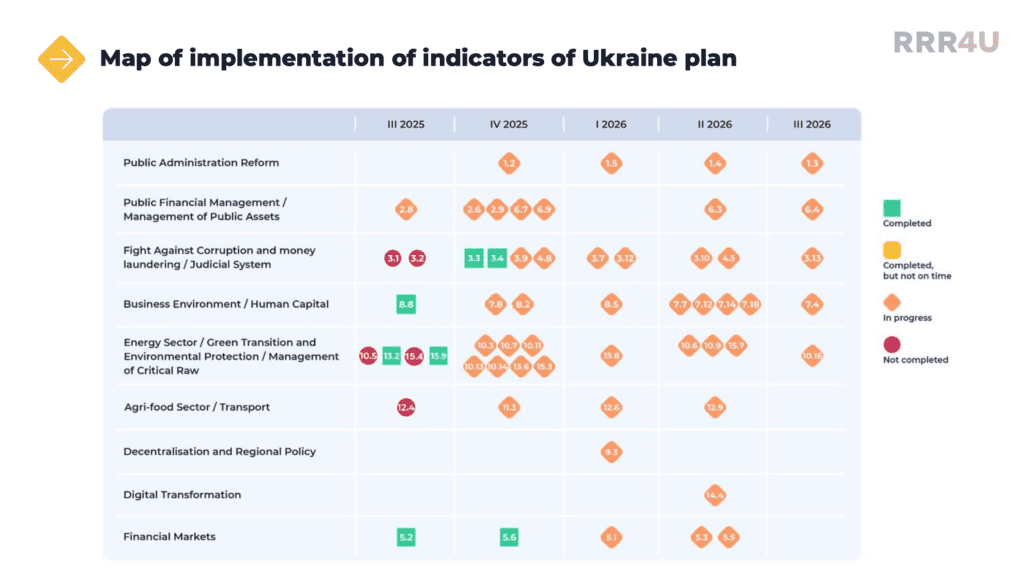


- World Bank assessment: reconstruction and recovery financing needs > EUR 500 bn
- Public funds from Ukraine and international partners, as well as IFIs, will not cover the needs
- Therefore, the key is to attract private capital under transparent, long-term and predictable instruments.
- However, Ukraine still has a weak market infrastructure, and without it, the cost of money is higher, terms are shorter, and risks are greater.
A working capital market transforms savings into long-term investments, reduces risks through transparent pricing, and opens ‘exits’ for investors.
- The financial market remains stable
- The operational and management weaknesses of the NSSMC need to be overcome
- It is urgent to close capital market gaps to attract foreign private capital for post-war reconstruction
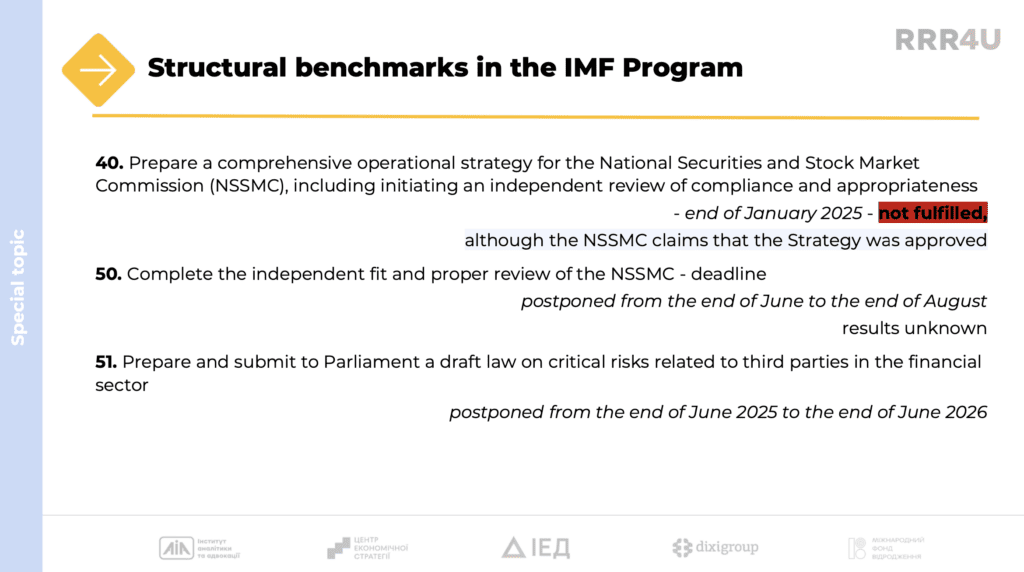


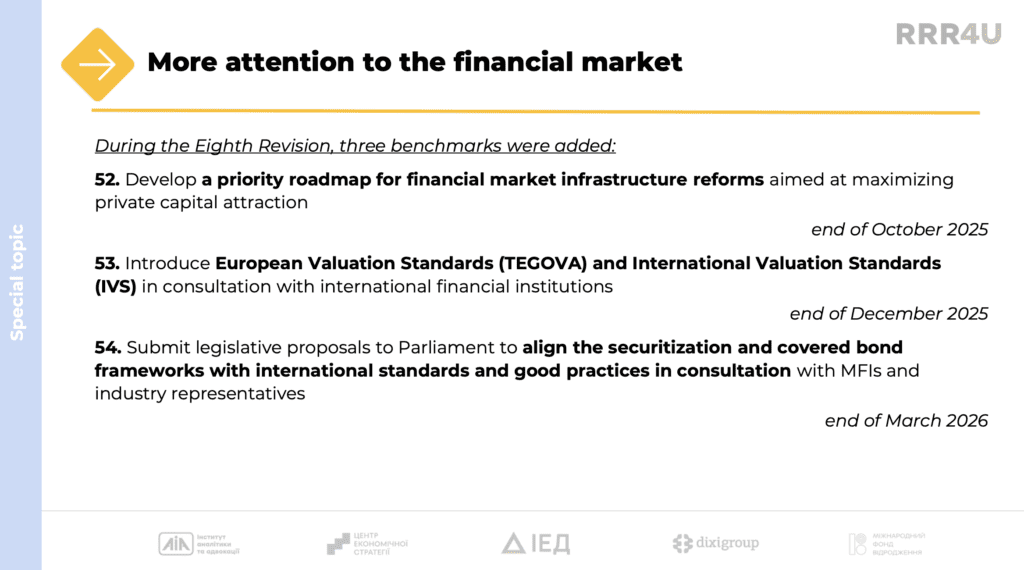


- Alternatives to bank financing still remain limited and capital market infrastructure is fragmented, indicating broad opportunities for the development of the non-bank financial sector.
- Develop a roadmap for aligning the regulatory framework related to capital markets with the EU acquis. This will include approximation of laws and regulations in the areas of financial market infrastructure, securities markets and investment services.
- The legislation governing the supervision of the NSSMC over capital markets must be harmonized with the legislation of the European Union and the principles of the International Organization of Securities Commissions (hereinafter referred to as IOSCO).
- Indicator No. 5.6. Entry into force of the Law on Improving State Regulation of Capital Markets and Organized Commodity Markets – implemented
- The independence and capacity of the NSSMC should be strengthened.
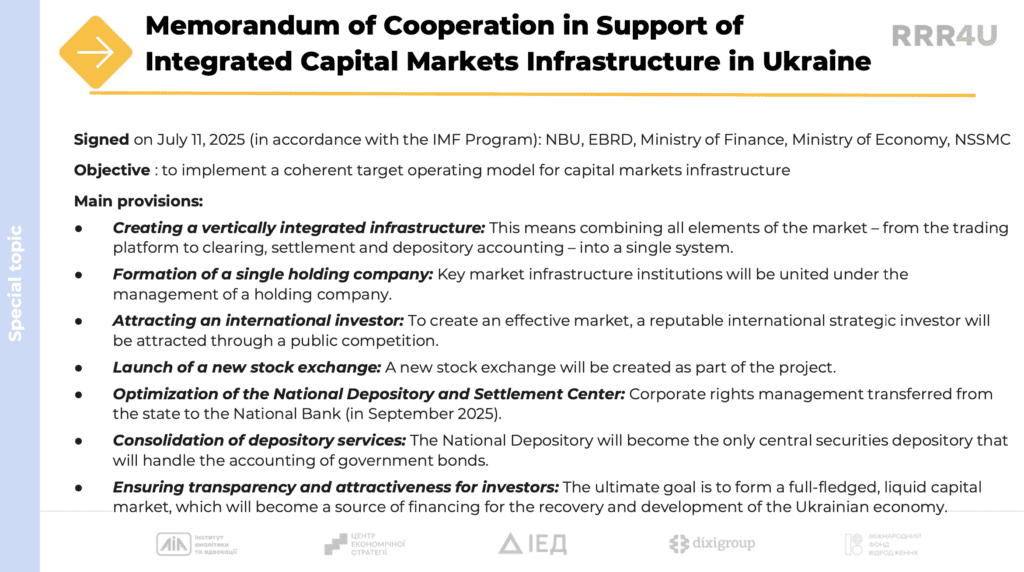


- Long instruments: instruments should be interesting, in particular, for the population that keeps savings in an envelope or invests in cryptocurrency. This requires trust. Could these be municipal bonds, green bonds, etc.?
- Housing and mortgages: current mortgage lending support programs are not sufficient, but at the same time they may partially distort the market. At the same time, the market rate is high, which does not promote mortgage lending. Should we talk about mortgage securities and portfolio securitization?
- Business growth: the development of private investment funds, in particular venture funds, is important for access to financing, in particular for startups. Is it realistic to update the legislation, in particular to simplify the conditions for small funds?
- The capital market should allow local IPOs to obtain financing for development
- Hedging risks over time – after the war, it will be about currency risk again, but for now war risks outweigh all others. What tools can be implemented now, and what can be postponed for later?
You can view the previous monitors on the website RRR4U
The monitoring was prepared with the support of the International Renaissance Foundation.
RRR4U (Resilience, Reconstruction and Relief for Ukraine) is a consortium of four Ukrainian civil society organisations: Centre for Economic Strategy, Institute for Economic Research and Policy Consulting, Institute of Analytics and Advocacy and DiXi Group.
